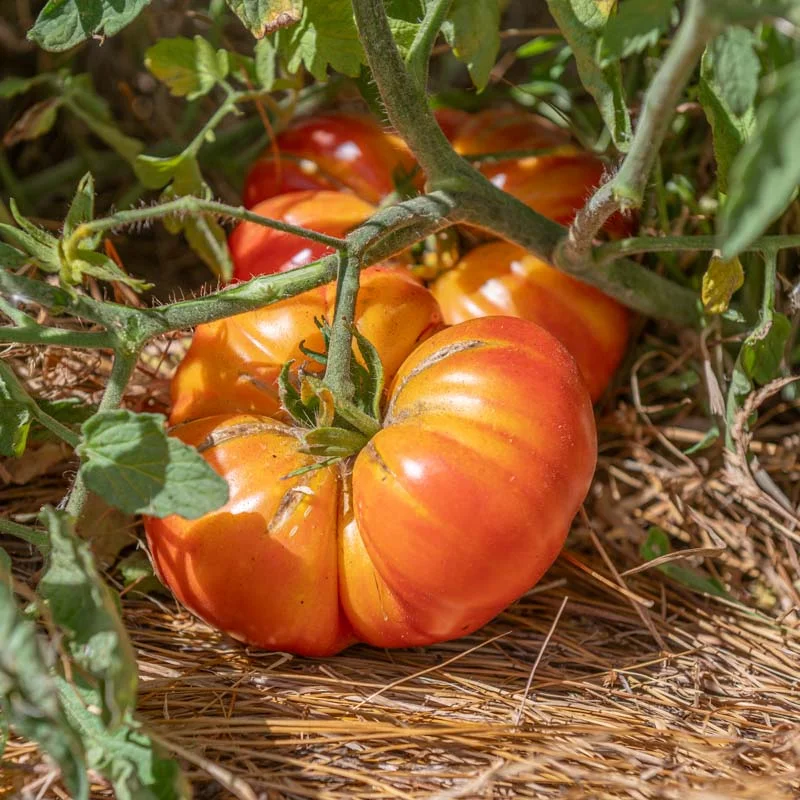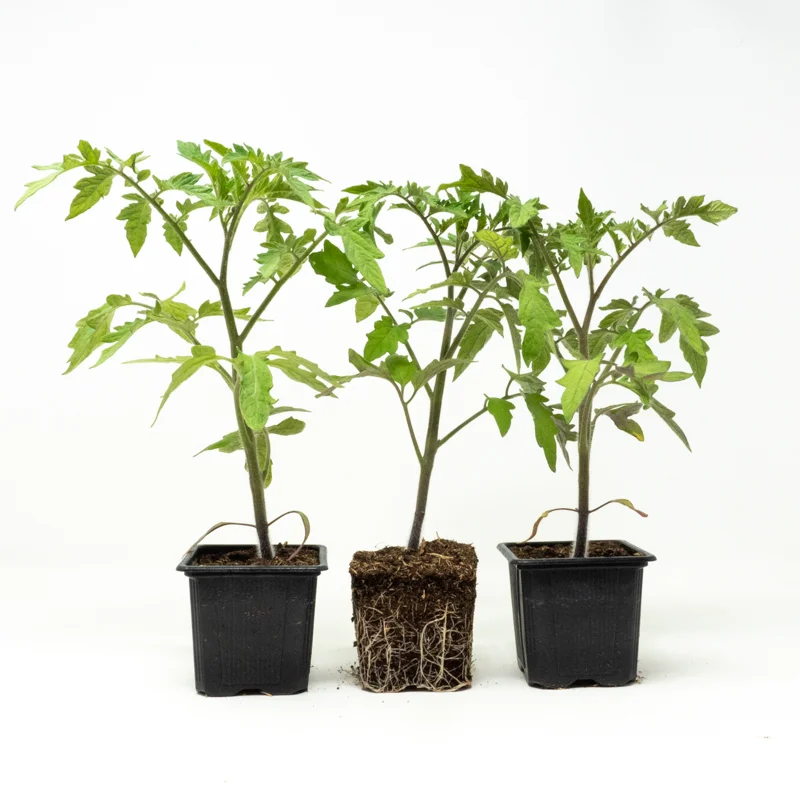Tomato Pineapple plants
Go exotic with the Pineapple Tomato, an old, late variety of tomato native to Kentucky. This indeterminate-growth variety produces enormous "beef-flesh" fruits. They are a variegated color, yellow marbled with red, and can weigh up to 1 kg. Their dense, juicy and colorful flesh is reminiscent of pineapple, with a sweet, rich, fragrant and slightly acidic flavor.
Ideal for salads and exquisite carpaccios.
How to grow pineapple tomatoes
Grow your tomatoes in fertile soil, rich in organic matter, and choose a sunny spot sheltered from strong winds.
- Start tomato seedlings between February and April, depending on the climatic conditions in your region.
- Use a suitable container, such as a small bucket, box or honeycomb tray, and high-quality organic sowing soil.
- Sow the seeds at a depth of 0.5 cm in a warm, well-lit spot.
- Harden the seedlings before planting in the garden.
- Plant the tomatoes in well-amended soil in a sunny spot, 50 cm apart in all directions.
- Prune indeterminate plants.
- Mulch plants generously.
- Use a variety of natural fertilizers.
- Water regularly, especially for this variety, which is sensitive to apical necrosis.
When to transplant pineapple tomato plants?
Young tomato plants should be planted out in the vegetable garden when the risk of frost has passed, which in many French regions means around mid-May, during the period known as the "Saints de Glace". Ideally, the outside temperature should not fall below 10°C when the young plants come out.
When to harvest pineapple tomatoes?
Pineapple tomatoes begin to be harvested in the garden 85 to 90 days after transplanting, then regularly throughout the season.
Tomato diseases and pests
In many vegetable gardens, tomato diseases are legion. All it takes is a rainy summer or fungus in the soil to wipe out the crop, but downy mildew and chlorosis are not inevitable.
The most common tomato diseases, caused by fungi or deficiencies, include :
- downy mildew ;
- powdery mildew
- apical necrosis ;
- botrytis ;
- Alternariosis ;
- chlorosis.
Tomato companion plants
Tomatoes will thrive near :
There are a number of useful associations with tomatoes, notably to repel insects and other pests to prevent disease, but also to save space in the vegetable garden or improve the taste of tomatoes.
Crops to combine with tomatoes include
- cabbage ;
- carrots ;
- radish ;
- beet ;
- lettuce
- aromatic plants in general and basil in particular;
- flowers, specifically carnations and marigolds.
Shipping and delivery of pineapple tomato plants
- Orders are dispatched Monday to Thursday.
- Shipment to mainland France only.
- Shipping cartons designed for optimal plant protection.
- Free shipping does not apply to plants.










